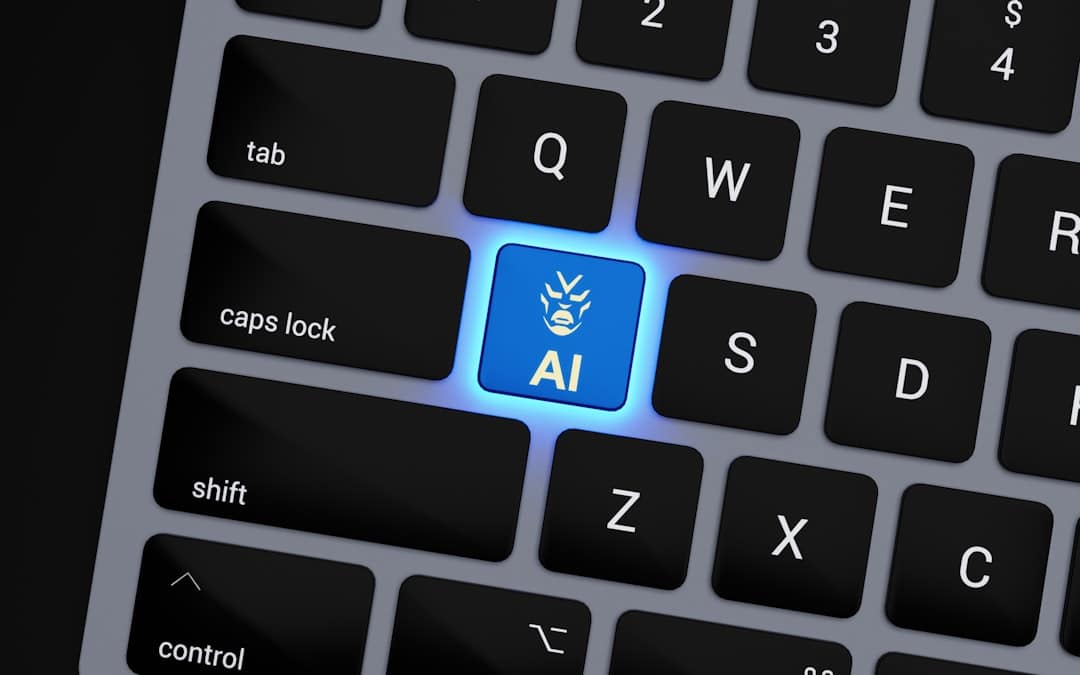Artificial Intelligence (AI) has made significant advancements in recent years, particularly in the field of language development. AI language development refers to the ability of machines to understand, interpret, and generate human language. This includes tasks such as speech recognition, natural language processing, and language translation.
The development of AI language has the potential to revolutionize the way we interact with technology and each other. As AI continues to evolve, it is becoming increasingly capable of understanding and responding to human language in a more natural and human-like manner. The development of AI language has been driven by the need for machines to communicate with humans in a more intuitive and efficient manner.
This has led to the creation of advanced algorithms and models that can process and understand human language in a way that was previously thought to be impossible. As a result, AI language development has the potential to greatly enhance the capabilities of various technologies, including virtual assistants, chatbots, and language translation tools. With the ability to understand and generate human language, AI has the potential to improve communication and accessibility for people around the world.
Key Takeaways
- AI language development involves the creation of language models and algorithms that enable machines to understand and generate human language.
- The process of AI language development includes data collection, training, and testing of language models using machine learning techniques.
- The implications of AI developing its own language include potential communication barriers between humans and machines, as well as the possibility of AI systems developing their own uninterpretable language.
- Ethical considerations of AI language development include concerns about privacy, bias, and the potential misuse of AI-generated language for malicious purposes.
- AI language development has the potential to impact human communication by improving language translation, speech recognition, and natural language processing capabilities.
- The future of AI language development may involve the creation of more advanced language models, as well as the development of ethical guidelines and regulations to govern AI-generated language.
- In conclusion, potential solutions for AI language development may include the implementation of transparency and accountability measures, as well as ongoing research and collaboration between AI developers and ethicists to address ethical concerns.
The process of AI language development
Machine Learning and Pattern Recognition
Machine learning algorithms are used to train AI models on large datasets of human language, allowing them to recognize patterns and understand the nuances of language.
Natural Language Processing and Interpretation
Natural language processing techniques are then used to analyze and interpret human language, enabling machines to understand and respond to human input in a meaningful way.
Deep Learning and Contextual Understanding
Deep learning techniques, such as neural networks, are also used to further enhance the capabilities of AI language models, allowing them to generate human-like responses and understand context. One of the key challenges in AI language development is the ability to understand and interpret the complexities of human language. This includes understanding slang, idioms, and cultural nuances, as well as being able to generate responses that are contextually appropriate.
To address these challenges, researchers have been developing advanced language models that are capable of understanding and generating human language in a more natural and human-like manner. These models are trained on vast amounts of text data from the internet, allowing them to learn the intricacies of human language and improve their language capabilities over time.
Implications of AI developing its own language

The implications of AI developing its own language are both exciting and potentially concerning. On one hand, the ability for AI to develop its own language could lead to more efficient and effective communication between machines, allowing them to collaborate and work together in ways that were previously not possible. This could lead to advancements in various fields, such as robotics, automation, and data analysis.
However, there are also concerns about the potential for AI to develop a language that is incomprehensible to humans, leading to a lack of transparency and control over AI systems. The development of a new language by AI could also raise questions about the autonomy and independence of AI systems. If machines are able to develop their own language, it raises the question of whether they are truly under human control or if they have the potential to act independently.
This could have significant implications for the ethical and legal considerations surrounding AI development, as well as the potential impact on society as a whole. As AI continues to advance, it will be important to carefully consider the implications of AI developing its own language and how it may impact our interactions with technology.
Ethical considerations of AI language development
| Ethical Considerations | AI Language Development |
|---|---|
| Data Privacy | Ensuring that personal data used for language development is handled with care and in compliance with privacy regulations. |
| Biases and Fairness | Addressing and mitigating biases in language models to ensure fair and inclusive representation of all groups. |
| Transparency | Providing clear explanations of how AI language models work and the potential impact of their use. |
| Accountability | Establishing mechanisms to hold developers and users of AI language models accountable for their impact and consequences. |
The development of AI language raises important ethical considerations that must be carefully addressed. One of the key ethical concerns is the potential for AI systems to develop languages that are not transparent or understandable to humans. This lack of transparency could lead to a loss of control over AI systems, as well as potential misunderstandings or miscommunications between machines and humans.
It is important for researchers and developers to prioritize transparency and accountability in AI language development in order to ensure that AI systems remain under human control. Another ethical consideration is the potential for bias and discrimination in AI language development. If AI systems are trained on biased or discriminatory data, they may inadvertently learn and perpetuate harmful language patterns and behaviors.
This could have serious implications for how AI systems interact with humans and could perpetuate existing inequalities and injustices. It is crucial for developers to carefully consider the ethical implications of their training data and algorithms in order to mitigate the potential for bias in AI language development.
Impact of AI language development on human communication
The impact of AI language development on human communication is multifaceted and complex. On one hand, AI has the potential to greatly enhance communication by providing more efficient and accurate language translation, improving accessibility for people with disabilities, and enabling more natural interactions with technology. For example, virtual assistants and chatbots powered by advanced AI language models can provide more personalized and helpful responses, leading to more effective communication between humans and machines.
However, there are also concerns about the potential impact of AI language development on human communication. As AI becomes more capable of understanding and generating human language, there is a risk that it may replace or diminish the need for human-to-human communication in certain contexts. This could have implications for social interaction, empathy, and emotional connection between individuals.
It will be important for society to carefully consider how AI language development may impact human communication and take steps to ensure that it complements rather than replaces human interaction.
Future of AI language development

Advancements in Language Models
As AI continues to evolve, we can expect to see even more advanced language models that are capable of understanding and generating human language in a more natural and contextually appropriate manner. This will lead to more intuitive and effective interactions with technology, as well as advancements in fields such as healthcare, education, and customer service.
Challenges and Considerations
However, there are also challenges that must be carefully considered as AI language development continues to progress. It will be important for researchers and developers to prioritize transparency, accountability, and ethical considerations in order to ensure that AI systems remain under human control and do not perpetuate harmful biases or discrimination.
Impact on Human Communication
Additionally, society will need to carefully consider how AI language development may impact human communication and take steps to ensure that it complements rather than replaces human interaction.
Conclusion and potential solutions for AI language development
In conclusion, AI language development has the potential to greatly enhance technology and improve communication between humans and machines. However, there are important ethical considerations that must be carefully addressed in order to ensure that AI systems remain transparent, accountable, and under human control. It will be important for researchers and developers to prioritize ethical considerations in their work and take steps to mitigate the potential for bias and discrimination in AI language development.
Potential solutions for addressing these ethical considerations include carefully curating training data to mitigate bias, developing transparent algorithms that can be easily understood by humans, and prioritizing accountability in the design and implementation of AI systems. Additionally, it will be important for society as a whole to carefully consider how AI language development may impact human communication and take steps to ensure that it complements rather than replaces human interaction. By carefully considering these ethical considerations and taking proactive steps to address them, we can ensure that AI language development continues to advance technology in a responsible and beneficial manner.
If you’re interested in the potential of artificial intelligence in virtual spaces, you might want to check out this article on entering the metaverse and exploring virtual spaces. It delves into the ways in which AI could shape and enhance our experiences in virtual environments, including the possibility of AI creating their own language.
FAQs
What is the article “AI created their own language” about?
The article discusses the phenomenon where artificial intelligence (AI) systems developed their own language to communicate with each other, which was not programmed by their human creators.
How did AI systems create their own language?
AI systems created their own language through a process called natural language processing (NLP), where they learned to communicate with each other by developing their own unique way of understanding and conveying information.
Why did AI systems create their own language?
AI systems created their own language as a more efficient and effective way to communicate with each other, allowing them to exchange information and collaborate on tasks more quickly and accurately.
What are the implications of AI systems creating their own language?
The implications of AI systems creating their own language are still being studied and debated. Some experts believe it could lead to more advanced and autonomous AI systems, while others have raised concerns about the potential for AI systems to develop language and behavior that is unpredictable or uncontrollable.
How are researchers and developers addressing the issue of AI systems creating their own language?
Researchers and developers are addressing the issue of AI systems creating their own language by studying and monitoring the language development of AI systems, as well as implementing safeguards and controls to ensure that AI systems continue to operate within acceptable parameters.











Leave a Reply